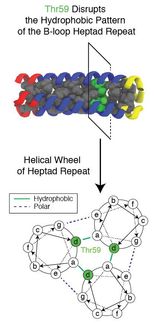Pathogens specifically target multi-function proteins
proteins form either small or large networks to perform their functions. How these protein networks are subverted by pathogens, has been investigated on a plant model by a research team. Distinct pathogens like fungi and bacteria were found to use the same tactic, launching targeted attacks on highly networked proteins that have multiple functions. The researchers’ findings are published in the current issue of Cell Host & Microbe.

Fungal infestation on a leaf of the model plant thale cress.
Jeffery L. Dangl / UNC
Proteins are responsible for practically all vital functions in an organism. For example, they catalyze metabolic reactions, forward signals, transport particular substances and control immune system responses. Researchers established some years ago that proteins do not function independently of each other, but instead form complex networks.
"When you examine the protein networks, you find many similarities with online social networks," says Dr. Pascal Falter-Braun from TUM's Chair of Plant Systems Biology. "Some proteins are good networkers that maintain contact with many other protein molecules, while others are less interactive."
Different pathogens attack the same targets
By studying the plant model Arabidopsis thaliana (thale cress), the researchers found that pathogens specifically targeted the highly networked proteins. "We were surprised that pathogens as biologically dissimilar as bacteria and fungi manipulate the same proteins," Falter-Braun continues. These include proteins which control important processes in the cells, for example the transcription factors which activate genes for the production of new proteins.
It has been known for some time that these "hubs" are important for the entire network since they coordinate and synchronize distict processes. "The aim of pathogens is to weaken their host as much as possible, so they try to attack and take over the control centers of the cell, in other words the proteins with the most 'friends' in the network," explains Falter-Braun.
Control centers are largely unchanged
The central role of these proteins is also reflected in the fact that they have barely evolved over time. When organisms evolve, minor mutations can lead to changes in their molecules. If this results in an advantage for the particular organism, it is likely that the new properties will be passed on to its offspring.
In the case of highly networked proteins, such changes rarely occur, as Falter-Braun explains: "Since these proteins occupy such a central position in the network, it is very difficult for them to change without this having a negative impact on the plant." It appears that the pathogens exploit this evolutionary conservation by targeting proteins that do not change - and therefore cannot elude the intruders.
Assistance from the network
At the same time, the networks appear to be structured in a way that helps them effectively defend the vulnerable hubs. The proteins that are particularly 'attractive' to the pathogens often have neighbors with mutations that are well tolerated by the network. Further study is required in order to understand how this "neighborhood watch" works and whether the network provides other defense mechanisms.
The fact that different pathogens attack the same proteins in the plant could open the door to cultivating crop plants that are more resistant. Whether the results can be transferred to other organisms - and even to humans - is a question that will require further research. "Since human proteins have undergone the same evolutionary processes, it is perfectly possible that the findings will apply to humans, too," concludes Falter-Braun.























































